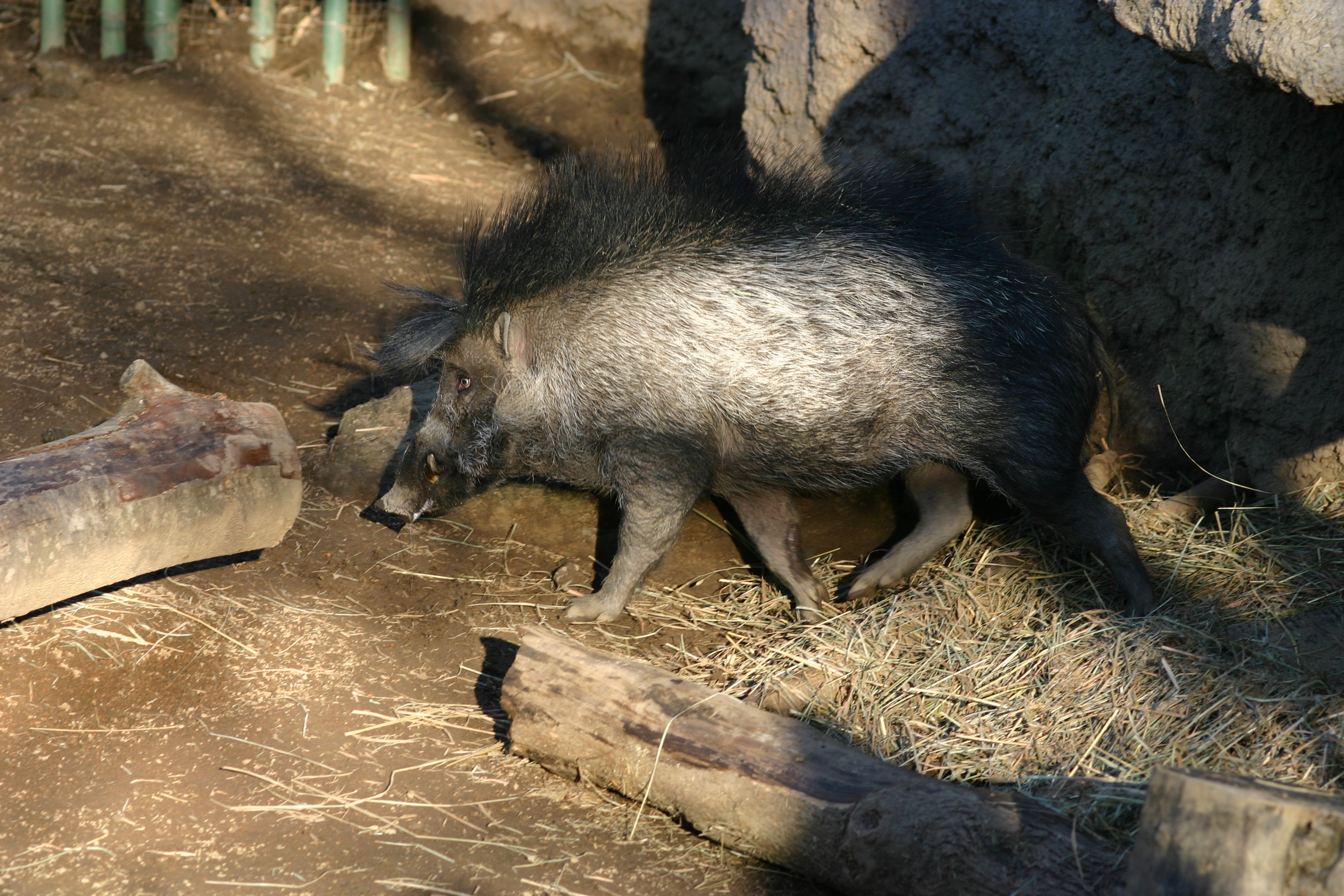- Visayan Warty Pig
Taxobox
name = Visayan Warty Pig
status = cr
status_system = iucn3.1
trend = stable

image_width = 225px
regnum =Animal ia
phylum = Chordata
classis = Mammalia
ordo =Artiodactyla
familia =Suidae
subfamilia =Suinae
genus = "Sus "
species = "cebifrons"
binomial = "Sus cebifrons"
binomial_authority = Linnaeus, 1758The Visayan Warty Pig, "Sus cebifrons", is acritically endangered species of pig. The Visayan warty pig is endemic to two of theVisayan Islands in the centralPhilippines , and is threatened by habitat loss, food shortages and hunting - these are the leading causes of the Visayan Warty Pig's status as critically endangered. Due to the small numbers of remaining Visayan Warty Pigs in the wild, little is known of their behaviors or characteristics outside of captivity.Subspecies
* Cebu Warty Pig ("Sus cebifrons cebifrons") (believed to be extinct)
* Negros Warty Pig ("Sus cebifrons negrinus"). There are two separate remaining populations of "S. c. negrinus" - on the islands of
Negros andPanay , respectively. Both populations have been physically and genetically isolated since the last ice age (c. 12,000 yrs). The current conservation program for "S. c. negrinus" includes successful breeding programs at theRotterdam Zoo for pigs of Negros origin, and at theSan Diego Zoo for pigs of Panay origin.Although it is believed that "S. cebifrons" can now only be found in Negros and Panay, some studies report of the possibility that a small population exists on the island of Masbate.
Distribution
The Visayan Warty Pig is endemic to six islands in the
Philippines . It is now extinct on four of the islands.Physical characteristics
The Visayan Warty Pig receives its name from the three pairs of fleshy "warts" present on the visage of the boar. Biologists speculate that the reason for the warts is to assist as a natural defense against the tusks of rival pigs during a fight. The boars also grow stiff spikey hair.
Habitat and diet
The Visayan Warty Pigs tend to live in groups of four to six. The diet of the pig mainly consists of roots, tubers, and fruits that can be found in the forest. They may also eat cultivated crops. Since approximately 95% of their natural habitat has been cleared by local farmers who cut down the forest to plant crops, the propensity of the pigs to eat cultivated crops has risen dramatically. Because the land that is cleared for farming is often unproductive after a few years, the food sources of the Visayan warty pig are extremely limited, a factor that has contributed significantly to the pig’s dwindling numbers.
Reproduction
Visayan Warty Pig piglets are often seen during the dry season between the months of January and March in their native habitat of the western Visayan Islands. The mean number of piglets is three to four per litter.
Captive status
In Europe, there are only 4 zoos that keep this species: Rotterdam Zoo,
Poznan Zoo ,Chester Zoo , andEdinburgh Zoo . They all keep the Negros Island variety. Various zoos in theUnited States also keep Visayan Warty Pigs. San Diego was the first zoo outside the Philippines to keep and breed Visayan Warty Pigs. Los Angeles, and Rotterdam have also bred the species.Crocolandia Foundation and theNegros Forests and Ecological Foundation, Inc. , both in thePhilippines also have this species in captivity.See also
*
Wild Pigs of the Philippines References and external links
* [http://www.redlist.org/search/details.php?species=21175 IUCN Red List]
* [http://www.oregonzoo.org/Cards/VisayanWartyPig.htm/ The Oregon Zoo]
* [http://www.ultimateungulate.com/Artiodactyla/Sus_cebifrons.html UltimateUngulate]
* [http://www.pawb.gov.ph/programs/wartypig.htm/ Visayan Warty Pig Conservation Programme]
Wikimedia Foundation. 2010.
